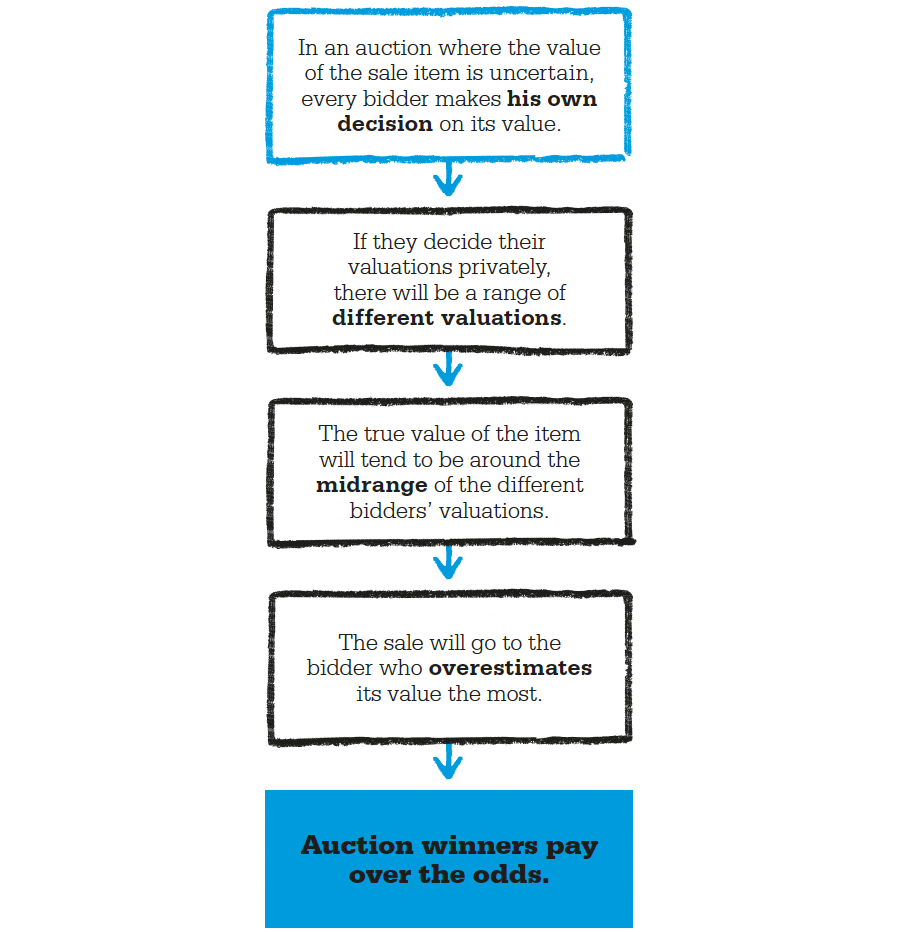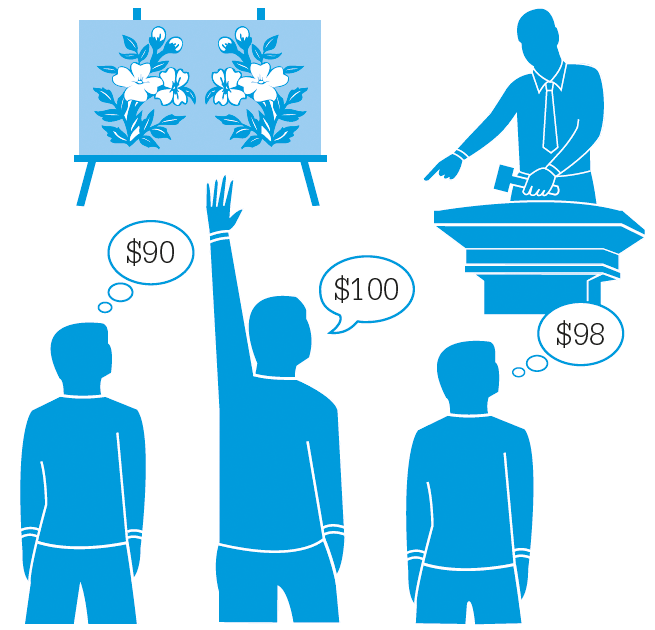

Decision making
William Vickrey (1914–96)
Paul Milgrom (1948–)
Roger Myerson (1951–)
1951 US mathematician John Nash develops a concept of equilibrium in games, which becomes a tenet of auction theory.
1961 Canadian economist William Vickrey uses game theory to analyze auctions.
1971 It is shown that oil companies bidding for drilling leases may not be aware of the “winner’s curse.”
1982 US economists Paul Milgrom and Robert J. Weber show that when bidders know their competitors’ valuations, an “English auction” gives the best price for the seller.
Auctions have been around for a long time, but economists have only recently come to realize that they are an ideal proving ground for the competitive strategies of game theory. Game theory came to prominence in the 1950s when mathematicians saw that simple games could illuminate situations in which people compete directly. This idea proved hard to apply to the real world. However, the strict rules of an auction, with limited participants and pokerlike buying strategies, seemed much closer to the theory.

The first person to apply game theory to auctions was Canadian economist William Vickrey in the 1960s. He compared the three most common types of auctions. An “English auction” is the method used in British art houses, where bidding goes up until only one bidder is left. In a “Dutch auction,” used in Dutch flower markets for example, the price drops until it reaches a price someone will pay. In a “first-price auction” bidders submit sealed bids, and the highest bidder wins. Vickrey proposed a fourth type of auction, similar to the first-price auction, but in which the winner pays as much as the second-highest bid.
Using mathematics, Vickrey proved that when bidders value items independently, all four types of auction yield the same revenue for the seller, a discovery known as “revenue equivalence theory.”

In an auction there is a danger that the winning bid will come from a bidder who has overvalued the item, a misfortune known as winner’s curse.

In Dutch auctions, as used in Holland’s Aalsmeer flower market, the price starts high and then begins to drop. The first bidder to stop the price as it drops takes the flowers.
Vickrey showed that it is better for bidders to bid less than their valuations, a strategy auction theorists call “shading,” otherwise they may end up paying over the odds. Shading gained special significance in the 1970s, when it seemed that oil companies bidding for offshore drilling rights often ended up paying far too much. Auction theorists discovered the phenomenon of the “winner’s curse:” an item goes to the bidder who overvalues it the most. Imagine that you submit a successful bid of $100 for a picture. You win because your bid is higher than all the others. Suppose the next highest bid had been $98. You could have bid lower—$98.01—and still been successful. In general the winning bidder pays “too much,” in this case to the tune of $1.99.
Auction theory can be used to design auctions that maximize the seller’s revenue and ensure that the good goes to the buyer who values it most. The success of the US government’s spectrum auctions in the 1990s (see box, right) created a buzz about this new area of economics. For many it was proof that game theory was not just theory but really did apply in actual markets. Others insist that auctions are a special type of market, and that even they might not be fully explainable using game theory. What does seem true is that auctions have now expanded well beyond their traditional domains of government procurements and public bond sales.
Auction theory came into its own with a dramatic spate of government auctions in the US in the 1990s as industries were privatized. The biggest sell-off came when mobile phone companies prepared to pay huge sums for a share of the electromagnetic spectrum (the airwaves) on which to transmit. The US government wanted to maximize its return, but it also wanted to ensure that the sale went to the bidder who valued it most.
In 1993, the Federal Communications Commission (FCC) brought in auction theorists to design the auctions for the 2,500 so-called spectrum licenses. The telecom companies, meanwhile, hired auction theorists to design their bid strategies. The FCC decided on an English-style auction but with a twist: the identity of the bidders was kept secret to avoid retaliatory bidding or collusion to keep prices down. The auctions broke all records, and the approach has been widely copied.
See also: The competitive market • Risk and uncertainty • Social choice theory • Game theory